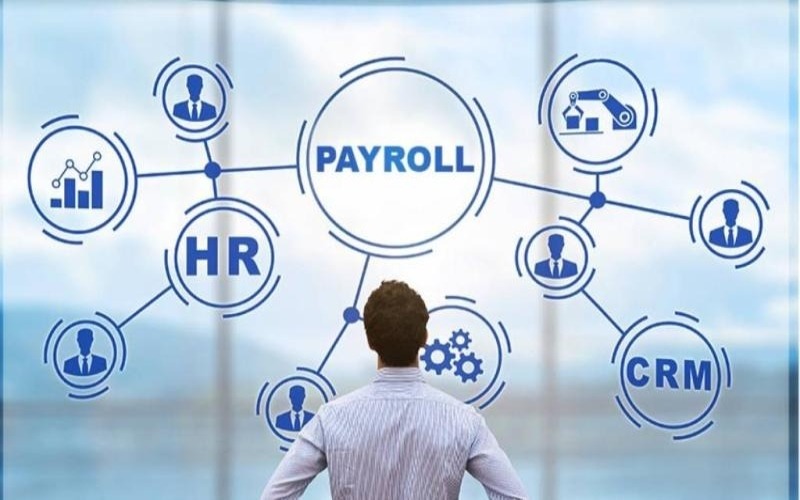Table of Contents:
- Introduction
- Integration of Payroll and HR Systems
- Enhancing Operational Efficiency
- Compliance and Transparency
- Facilitating Strategic Decision-Making
- Enhancing the Employee Experience
- Ensuring Data Security and Accuracy
- Conclusion
Introduction
In today’s dynamic business landscape, the seamless integration of payroll and human resources (HR) functions is more crucial than ever for effective workforce management. Historically viewed as separate entities, these functions are now recognized as symbiotic partners that drive operational success. Payroll ensures employees are compensated accurately and on time, forming the backbone of employee satisfaction and trust. Meanwhile, HR focuses on talent acquisition, development, and management, nurturing the overall well-being and productivity of the workforce. When these functions are integrated effectively, they enhance organizational agility, optimize compliance, and provide valuable insights for strategic decision-making. This article explores the multifaceted relationship between payroll and HR, highlighting how their integration can streamline workforce management and create a cohesive operational framework.
Integration of Payroll and HR Systems
Integrating payroll and HR systems is a critical step in creating a unified approach to workforce management. Technology advances have enabled businesses to employ online payroll systems that seamlessly connect with HR platforms. This integration facilitates real-time data sharing and eliminates the redundancies that plague separate systems. By adopting integrated solutions, organizations can automate essential processes such as attendance tracking, leave management, and benefits administration. This improves accuracy and liberates HR professionals, allowing them to devote more time and energy to strategic initiatives and value-added activities. Integrating systems is key to achieving fluid and error-free operations, ensuring data consistency and reliability across all departments.
Enhancing Operational Efficiency
The seamless integration of payroll and HR systems significantly enhances operational efficiency by reducing the administrative burden associated with workforce management. Automated processes eliminate the need for repetitive manual tasks, freeing up valuable time for HR and payroll staff to focus on strategic priorities that drive business growth. Automation minimizes the risk of errors resulting from manual data entry, leading to more accurate and timely payroll processing. This, in turn, reduces the likelihood of payroll disputes, enhances employee satisfaction, and fosters trust between the employer and the workforce. Organizations can streamline their operations by optimizing workflows, reducing redundancies, and creating a more agile and responsive business environment, benefiting employees and the organization.
Compliance and Transparency
Ensuring compliance with labor laws and regulations is a core responsibility of both payroll and HR departments. Integrated systems are pivotal in maintaining compliance by providing real-time updates on regulatory changes and offering detailed insights for audits and reporting. This transparency minimizes the risk of legal issues and fosters trust with employees and stakeholders. With a centralized system, organizations can efficiently generate reports, conduct audits, and maintain comprehensive records as needed, ensuring compliance is consistently upheld. Organizations can proactively address compliance challenges through automation and integrated processes, ensuring they remain aligned with evolving legal requirements while maintaining robust transparency and accountability.
Facilitating Strategic Decision-Making
One of the most significant advantages of integrating payroll and HR systems is making informed and strategic decisions based on comprehensive data analysis. The synthesis of payroll and HR data provides a holistic view of the workforce, enabling organizations to identify trends, forecast labor costs, and develop effective talent management strategies. The insights from this integrated data would allow businesses to make evidence-based decisions regarding workforce planning, budgeting, and performance management. This proactive approach ensures that organizations remain competitive and adaptable in a constantly changing business environment, facilitating growth and success in both the short and long term. By leveraging data-driven insights, businesses can better anticipate challenges, optimize resources, and strategically align their workforce initiatives with organizational goals.
Enhancing the Employee Experience
An integrated approach to payroll and HR benefits the organization and significantly enhances the employee experience. Streamlined processes lead to accurate and timely compensation, increasing employee satisfaction and engagement. Furthermore, integrated systems enable the implementation of self-service portals, empowering employees to access their payroll and HR information independently. This sense of autonomy fosters ownership and transparency, reducing the need for frequent HR interventions and allowing employees to focus on their core responsibilities without administrative distractions. By enhancing the overall employee experience, organizations can boost morale, improve retention rates, and create a positive work culture that attracts and retains top talent.
Ensuring Data Security and Accuracy
Data security and accuracy are paramount when managing sensitive payroll and HR information. Integrated systems offer robust security measures to protect data from unauthorized access and breaches. Organizations can establish strict access controls by centralizing data storage, conducting thorough audit trails, and implementing advanced encryption protocols to safeguard sensitive information. Accurate data is essential for informed decision-making, and integrated systems automate data validation processes, minimizing errors associated with manual input. By prioritizing data security and accuracy, businesses can maintain employee trust, protect confidential information, and ensure compliance with stringent data protection regulations. These security measures mitigate risks and reinforce the organization’s commitment to maintaining the privacy and integrity of employee information.
Conclusion
Integrating payroll and HR functions is a powerful catalyst for streamlining workforce management and driving organizational success. By leveraging technology, organizations can enhance operational efficiency, ensure compliance, and facilitate strategic decision-making. Integrated systems improve administrative processes and enhance employee experience by providing transparency and self-service capabilities. As businesses evolve in a rapidly changing environment, the synergy between payroll and HR will play an increasingly vital role in maintaining a competitive edge and achieving sustainable growth. Embracing this connection empowers organizations to effectively manage their workforce, address emerging challenges with agility, and confidently navigate the complexities of the modern business landscape.
